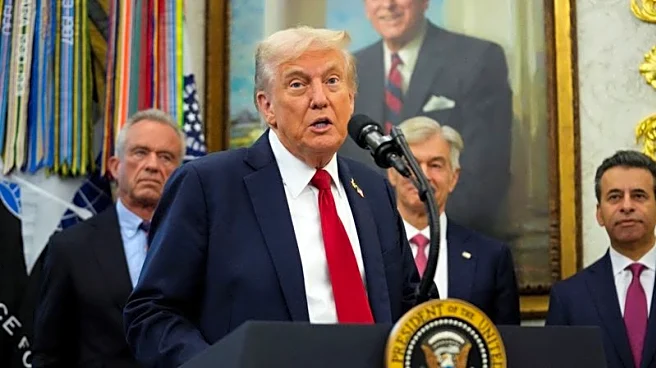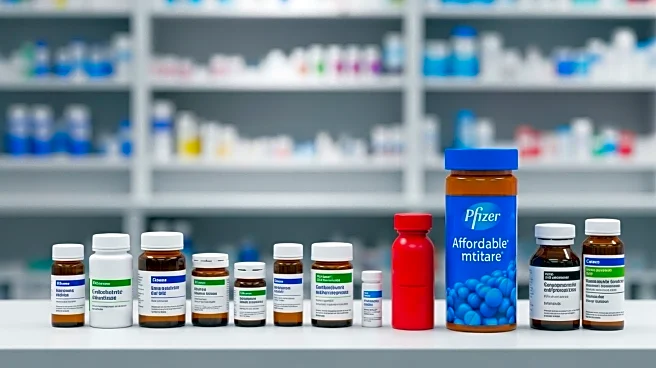What's Happening?
President Trump has introduced a new initiative aimed at reducing drug prices, branded as TrumpRx. This plan involves a partnership with pharmaceutical giant Pfizer, which has agreed to offer an average 50% discount on drugs through the TrumpRx platform. The initiative also includes a 'Most Favored Nation' pricing policy, where Pfizer will sell drugs to Medicaid and in the U.S. at prices comparable to those in other wealthy nations. However, experts like Ameet Sarpatwari from Harvard Medical School express doubts about the plan's potential to significantly lower out-of-pocket costs for consumers. The TrumpRx platform will not sell drugs directly but will connect consumers to existing discount programs, which may not be covered by insurance.
Why It's Important?
The introduction of TrumpRx is significant as it represents a high-profile attempt by the Trump administration to address the ongoing issue of high drug prices in the U.S. While the plan promises substantial discounts, the reliance on cash payments and the potential for higher list prices could limit its effectiveness. The initiative's success or failure could impact public perception of the administration's ability to manage healthcare costs, a critical issue for many Americans. Pharmaceutical companies may also face pressure to adjust pricing strategies, which could have broader implications for the industry and healthcare policy.
What's Next?
The Trump administration anticipates that other pharmaceutical companies will follow Pfizer's lead in offering discounts through TrumpRx. However, the plan's reliance on cash payments and potential insurance coverage gaps may prompt further scrutiny and debate. Stakeholders, including policymakers and consumer advocacy groups, are likely to monitor the plan's rollout and effectiveness closely. The administration may need to address these concerns to ensure the initiative achieves its intended impact on drug pricing.
Beyond the Headlines
The TrumpRx initiative highlights the complexities of drug pricing reform in the U.S. While the plan aims to lower costs, it also underscores the challenges of balancing consumer affordability with industry profitability. The 'Most Favored Nation' policy could lead to price adjustments in international markets, affecting global drug pricing dynamics. Additionally, the plan's focus on direct-to-consumer discounts raises questions about the role of insurance in managing healthcare costs and the potential need for broader systemic reforms.











